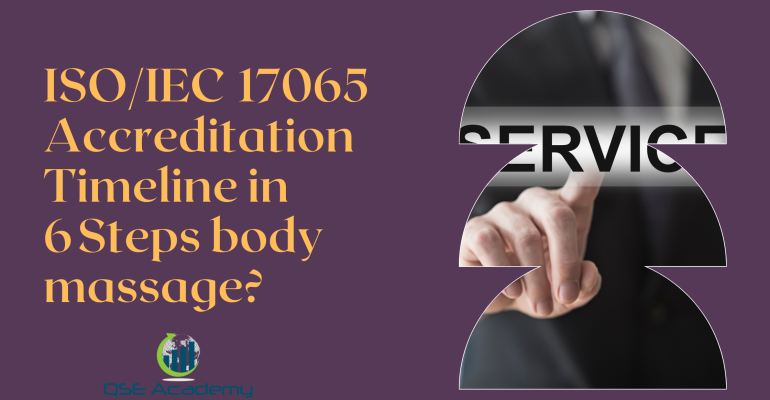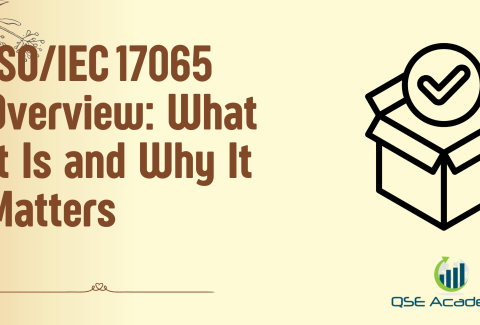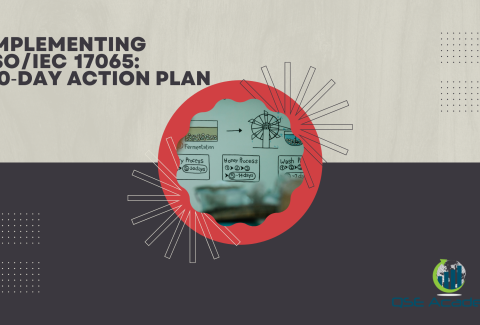ISO/IEC 17065 Accreditation Timeline in 6 Steps
Pre-Application Readiness — Documentation, Competence and Scheme Development
Here’s what I’ve noticed when certification bodies begin the ISO/IEC 17065 journey: the real work starts long before you submit an application. This is the stage where you build your foundation. You finalize your scheme documents, create your impartiality framework, define evaluation methods, map competencies, and align your subcontractor controls.
If your documentation is inconsistent or incomplete, everything that follows becomes slower and more frustrating.
Most teams need four to twelve weeks for this phase, depending on how mature their system is. Some rush and then spend months fixing gaps that should have been solved early.
One thing that always speeds things up: standardizing templates before diving into details. Every time I guide a team through this step, a well-organized documentation structure saves hours of confusion later.
A practical tip: complete at least ninety percent of your documentation before contacting the accreditation body. It makes the entire process smoother.
Step 2: Application Submission — What the Accreditation Body Expects
Once your system is ready, you can submit your formal application. Accreditation bodies expect a clean package that includes your scheme description, impartiality analysis, organizational structure, key personnel competence, and subcontractor agreements.
This step is straightforward, but delays happen when teams don’t respond to clarifications quickly. An accreditation body usually acknowledges your submission within one to three weeks. If they ask for additional information, get back to them within forty-eight hours. Momentum matters.
The most common mistake here is incomplete competence evidence. Accreditation bodies look closely at qualification, experience, training records, and technical competence. Any gaps will slow the process down.
 Step 3: Document Review — Desktop Assessment and Corrective Actions
Step 3: Document Review — Desktop Assessment and Corrective Actions
This is where the accreditation body digs deeper. They review every document you submit and cross-check how it aligns with ISO/IEC 17065 requirements. They look at how your procedures connect, how your scheme rules enforce consistency, and how your impartiality structure prevents conflicts.
A desktop review can take two to eight weeks. The speed depends on your document quality and the accreditation body’s workload. Sometimes you’ll receive a list of findings and need to submit corrective actions. It’s normal to have one or two rounds of corrections before the accreditation body is satisfied.
A clean, consistent document-control system reduces review time significantly. One of the fastest reviews I’ve seen happened because the team cross-referenced every procedure clearly and eliminated conflicting instructions. The assessor moved through everything quickly because nothing required interpretation.
A practical tip: check for cross-references before submitting. Many delays come from missing links between scheme rules, evaluation procedures, and competency requirements.
Step 4: On-Site Assessment — Scheduling, Coordination and Execution
Now the accreditation body verifies everything in person. This is a critical stage because it confirms your actual operational capability. Assessors review your processes, interview staff, evaluate your impartiality committee, and walk through your evaluation workflow. They also check how you manage records and whether your system works as documented.
Most onsite assessments last two to five days, depending on your scope. Multi-site operations or complex schemes add extra time.
Scheduling can delay this step if you’re not proactive. Senior assessors with technical expertise are in high demand. If you wait too long to schedule, you might get pushed back by several weeks or even months.
I’ve seen projects stall simply because witness scheduling wasn’t aligned with the team’s operational cycle. One team lost three months because they couldn’t match assessor availability with product evaluation timing.
A practical tip: plan assessor availability early. Don’t wait for the accreditation body to assign someone without having your timeline ready.
Step 5: Witness Assessments — Real-Time Evaluation and Evidence Gathering
Witness assessments confirm how you evaluate products in real time. The assessor observes actual evaluations, reviews test data, checks evaluator competence, and verifies impartiality in practice.
Depending on your scope, you may need one to three days per witness event. Some schemes require multiple observations to demonstrate consistency.
The biggest issue here is availability. If your team doesn’t have a scheduled evaluation or if the product isn’t ready for testing, everything gets delayed.
A practical tip: schedule witness activities during predictable operational periods. Routine evaluations show your real process, not an improvised one.
This step reveals operational truth, and accreditation bodies pay close attention. If a test setup is incomplete or poorly documented, the assessor may require another witness audit, extending your timeline.
Step 6: Final Accreditation Decision — Review, Approval and Certificate Issuance
After the onsite and witness assessments, the accreditation body reviews all reports. They verify that you’ve addressed any corrective actions and confirm that your system meets ISO/IEC 17065 requirements. This is where decision committees evaluate the entire assessment package.
This step usually takes four to twelve weeks. The speed depends on how quickly you respond to questions, how complete your corrective actions are, and how busy the accreditation body’s decision team is.
A practical tip: submit clear, structured evidence for corrective actions. If the decision team has to interpret or search for information, the timeline stretches.
Teams that prepare thoroughly often receive faster approval because their corrective actions are precise and complete. Once approved, the accreditation body issues the accreditation certificate and publishes your organization in their directory or website.
Frequently Asked Questions About the ISO/IEC 17065 Accreditation Timeline
How long does ISO/IEC 17065 accreditation usually take?
Most certification bodies complete the process within six to twelve months. The timeline depends on documentation readiness, scheme complexity, availability of assessors, and how quickly you respond to corrective actions. I’ve seen well-prepared teams complete it in as little as six months and unprepared teams stretch it past a year.
Can we shorten the accreditation timeline?
Yes, but only if the fundamentals are strong. When your documentation is clear, competence evidence is complete, and witness evaluations are aligned with your operational schedule, everything moves faster. Quick responses to accreditation body queries also reduce delays. Preparation is the biggest accelerator.
What causes the longest delays?
Delays usually come from incomplete documentation, slow corrective actions, and poor witness scheduling. Another major cause is waiting too long to coordinate assessor availability. If your product evaluation schedule isn’t aligned with the assessor’s schedule, everything stalls.
Conclusion: Your Six-Step Roadmap to ISO/IEC 17065 Accreditation
The entire accreditation journey becomes far more manageable when you understand the timeline. The six steps give you a predictable structure: prepare thoroughly, submit confidently, respond quickly during review, plan your onsite assessment strategically, coordinate witnessing smoothly, and close out corrective actions with clarity.
This process demands discipline, consistency, and early planning. Every certification body that succeeds treats documentation, competence, and operational readiness as priorities—not afterthoughts.
I’ve supported many teams through this process, and the pattern is always the same: strong preparation cuts months off the timeline. Weak preparation turns the accreditation path into an endless cycle of questions, corrections, and rescheduling.
Melissa Lavaro is a seasoned ISO consultant and an enthusiastic advocate for quality management standards. With a rich experience in conducting audits and providing consultancy services, Melissa specializes in helping organizations implement and adapt to ISO standards. Her passion for quality management is evident in her hands-on approach and deep understanding of the regulatory frameworks. Melissa’s expertise and energetic commitment make her a sought-after consultant, dedicated to elevating organizational compliance and performance through practical, insightful guidance.









